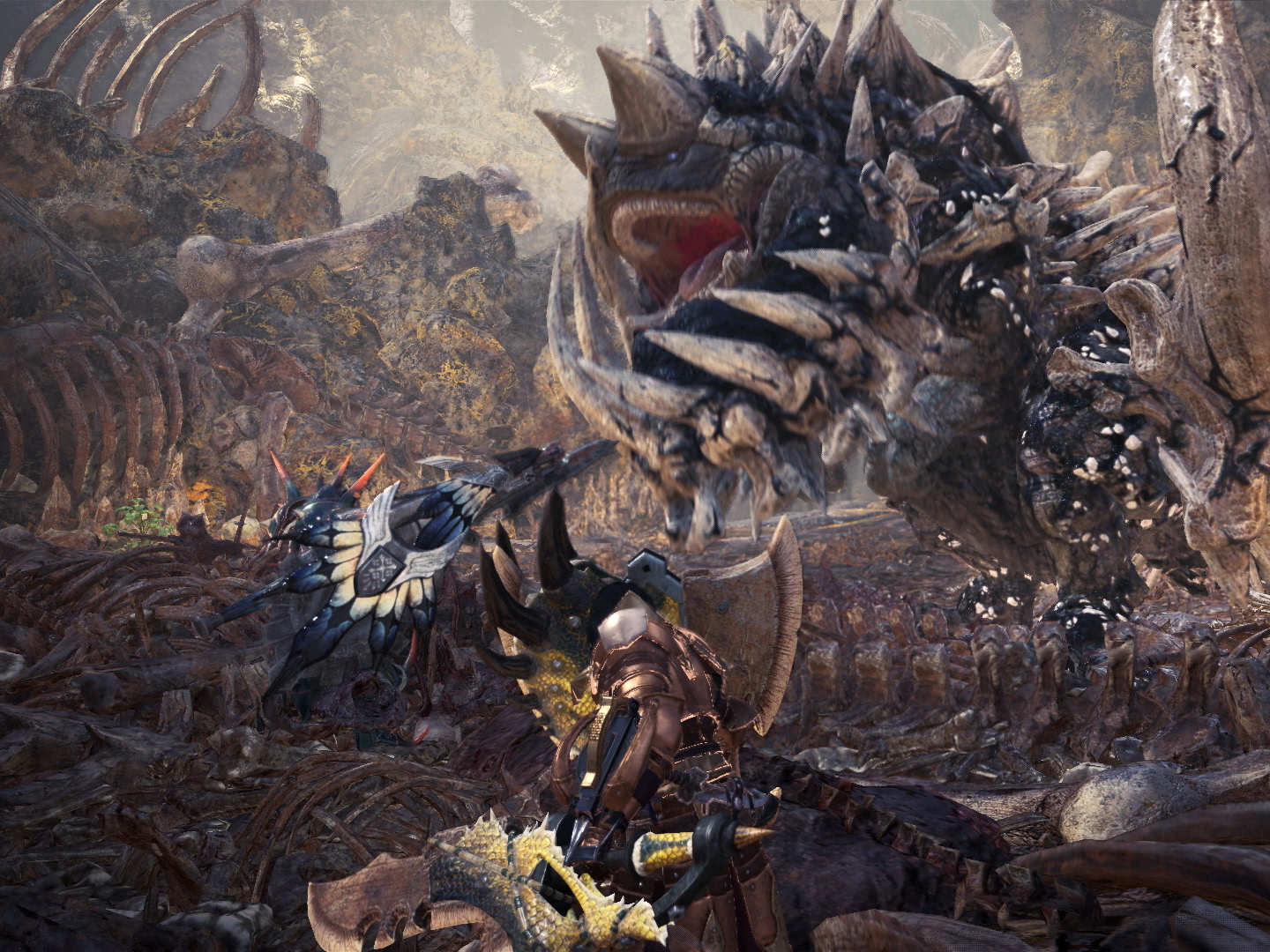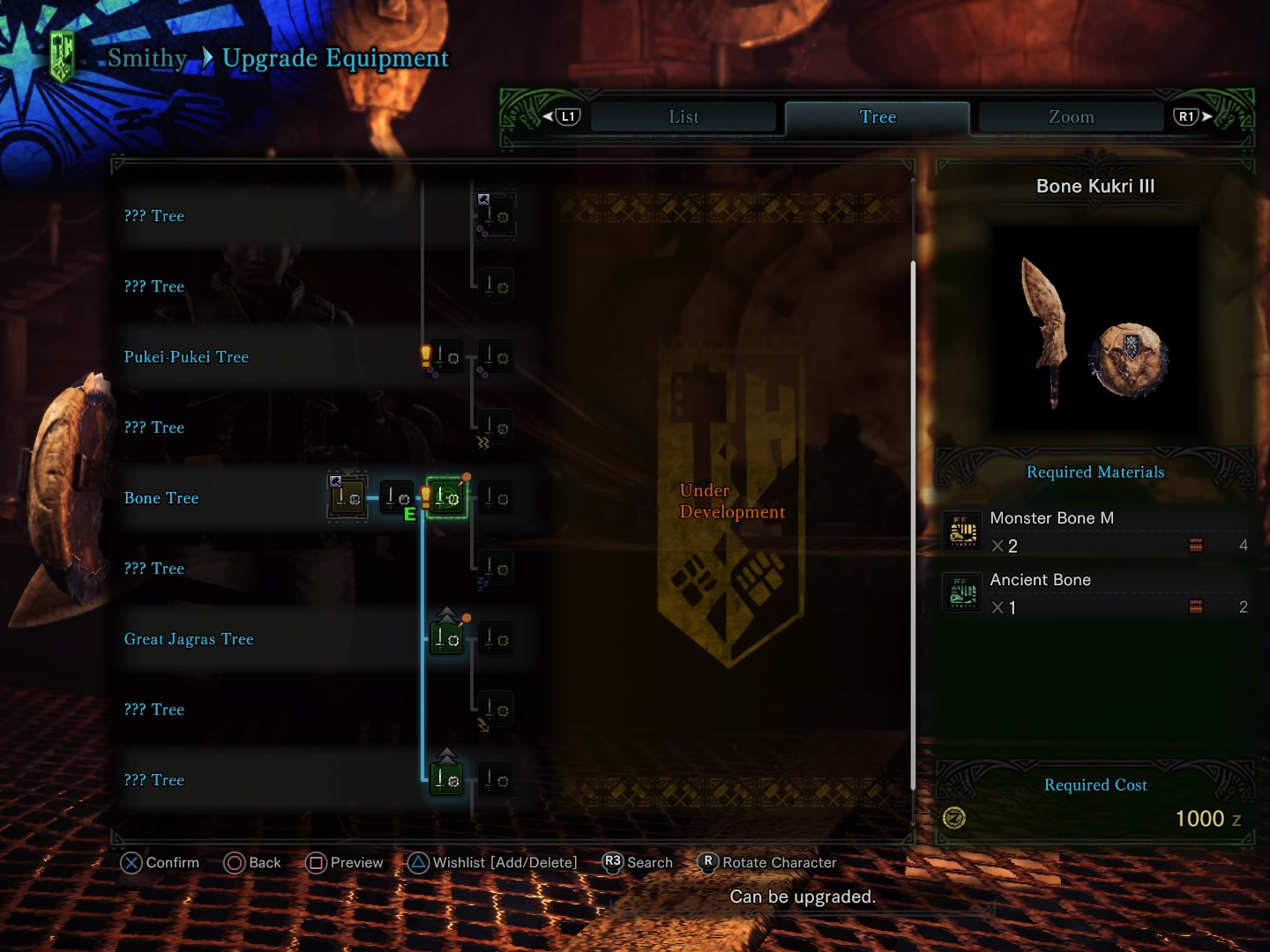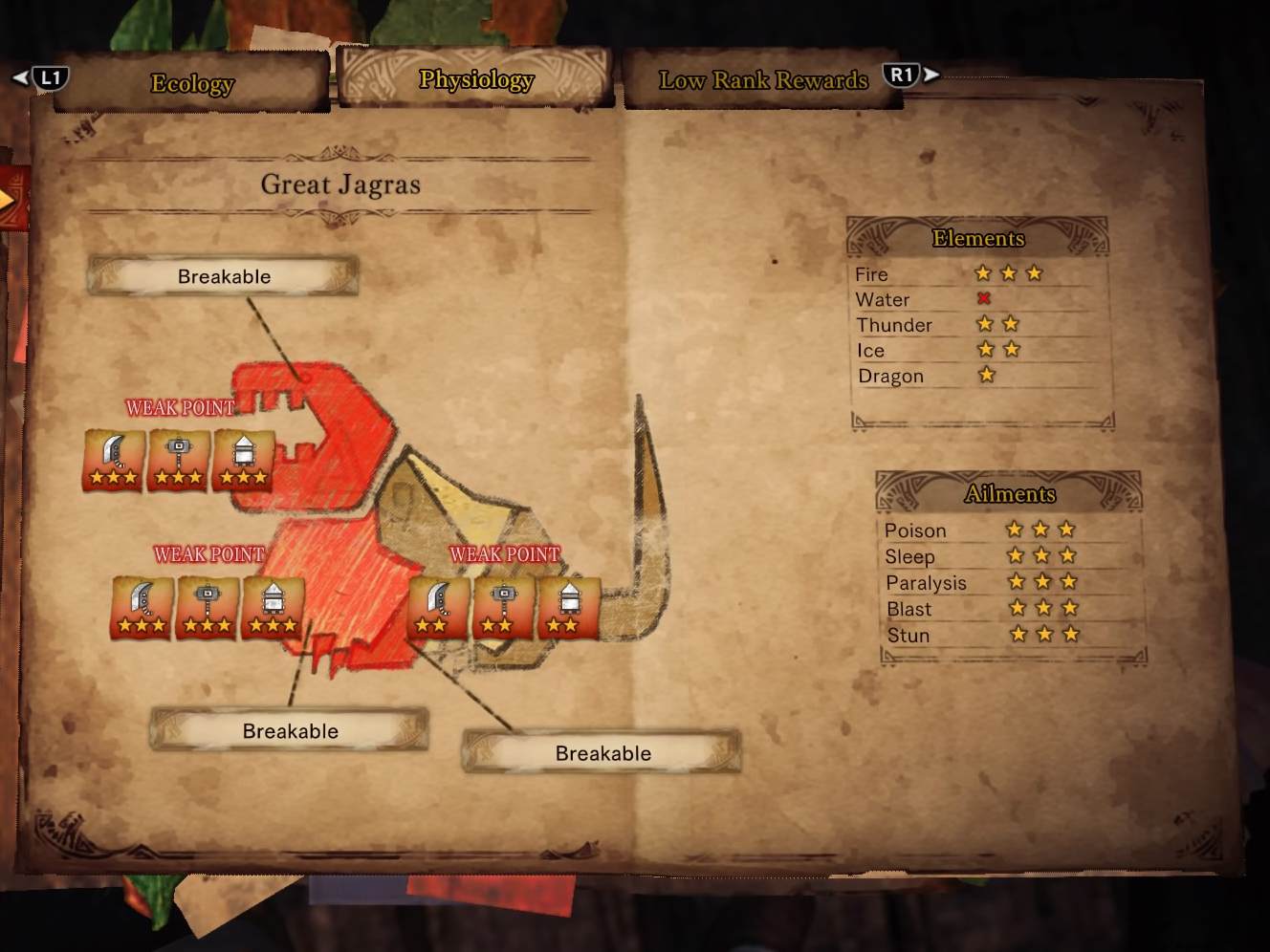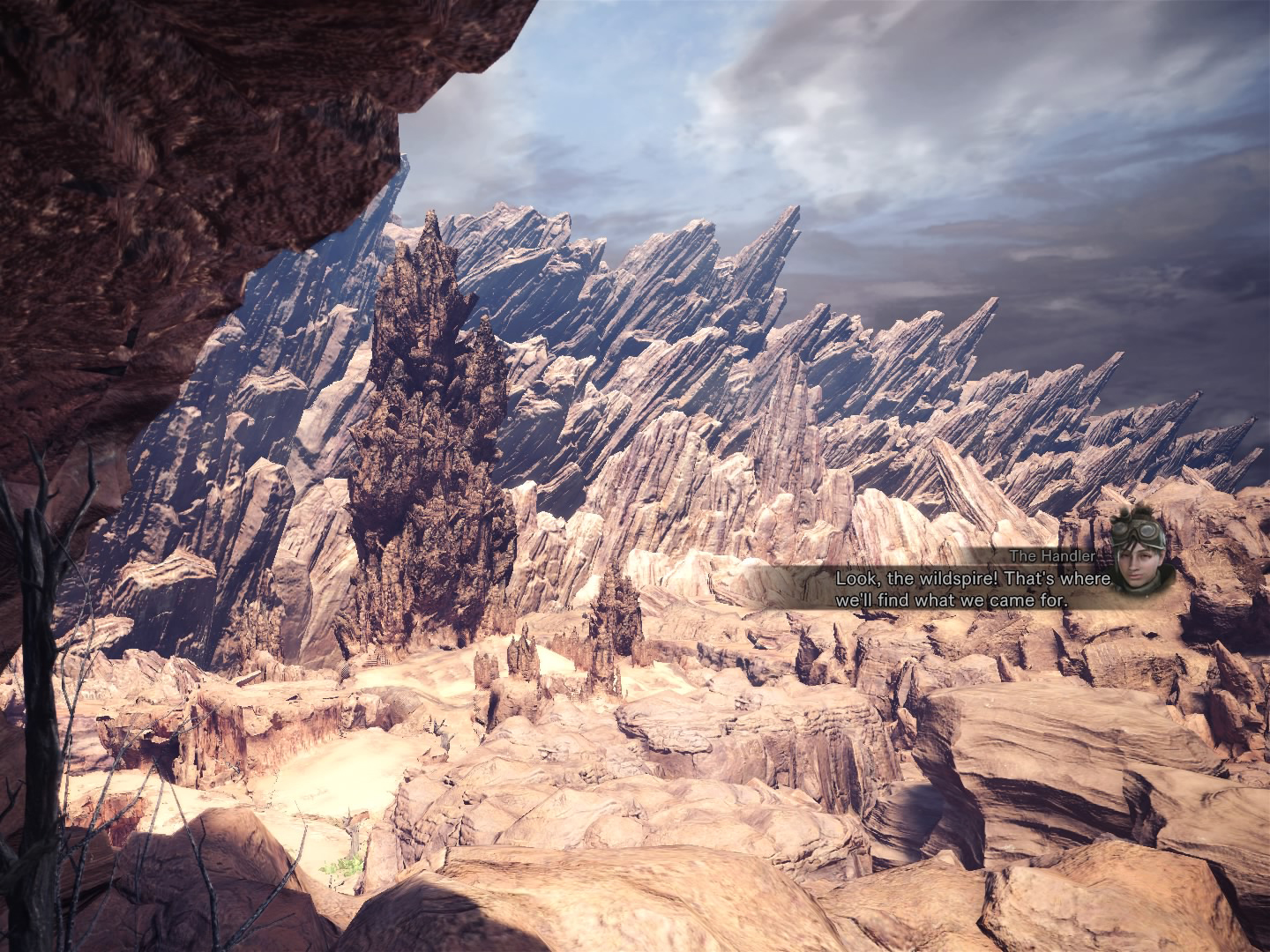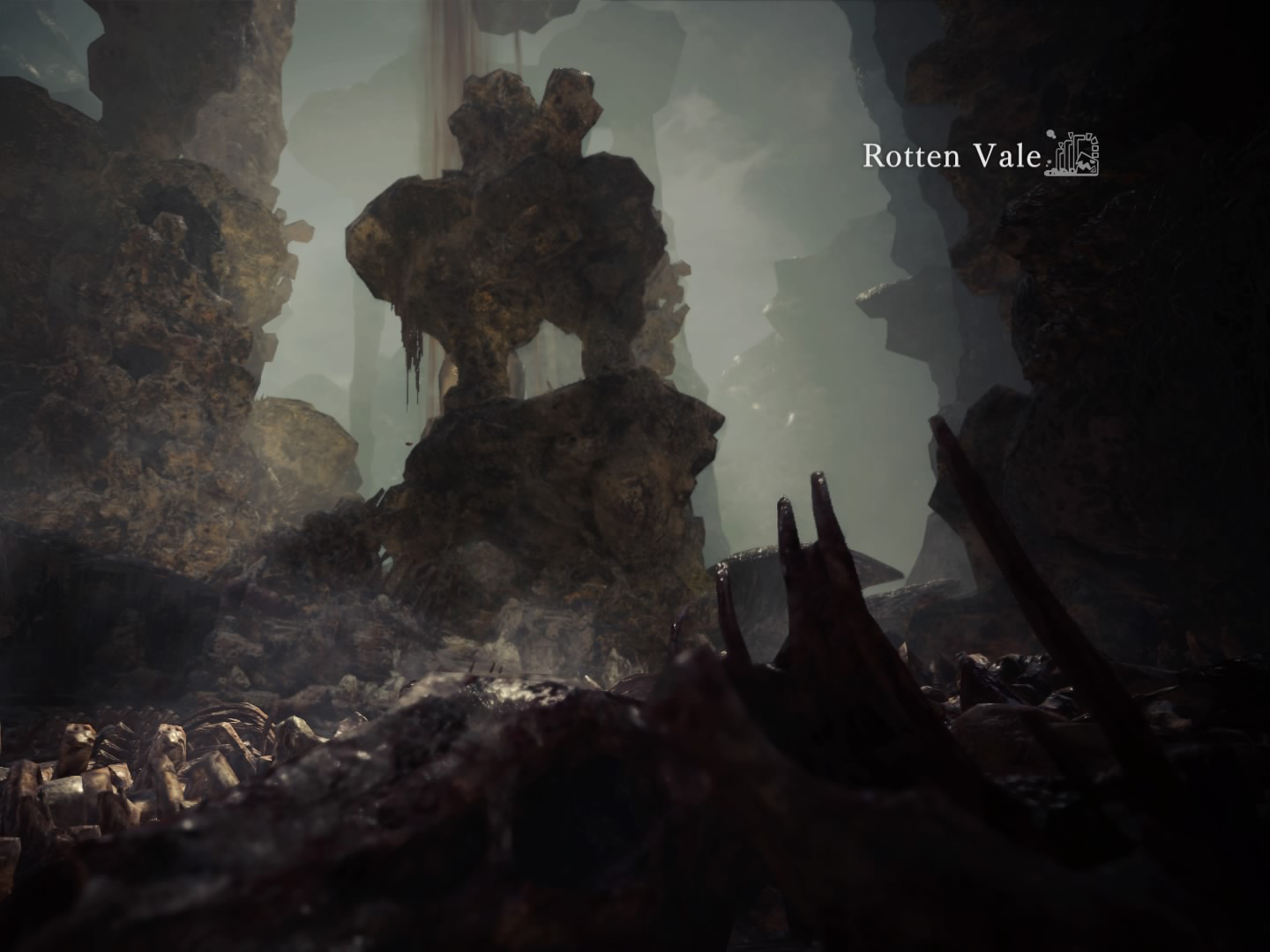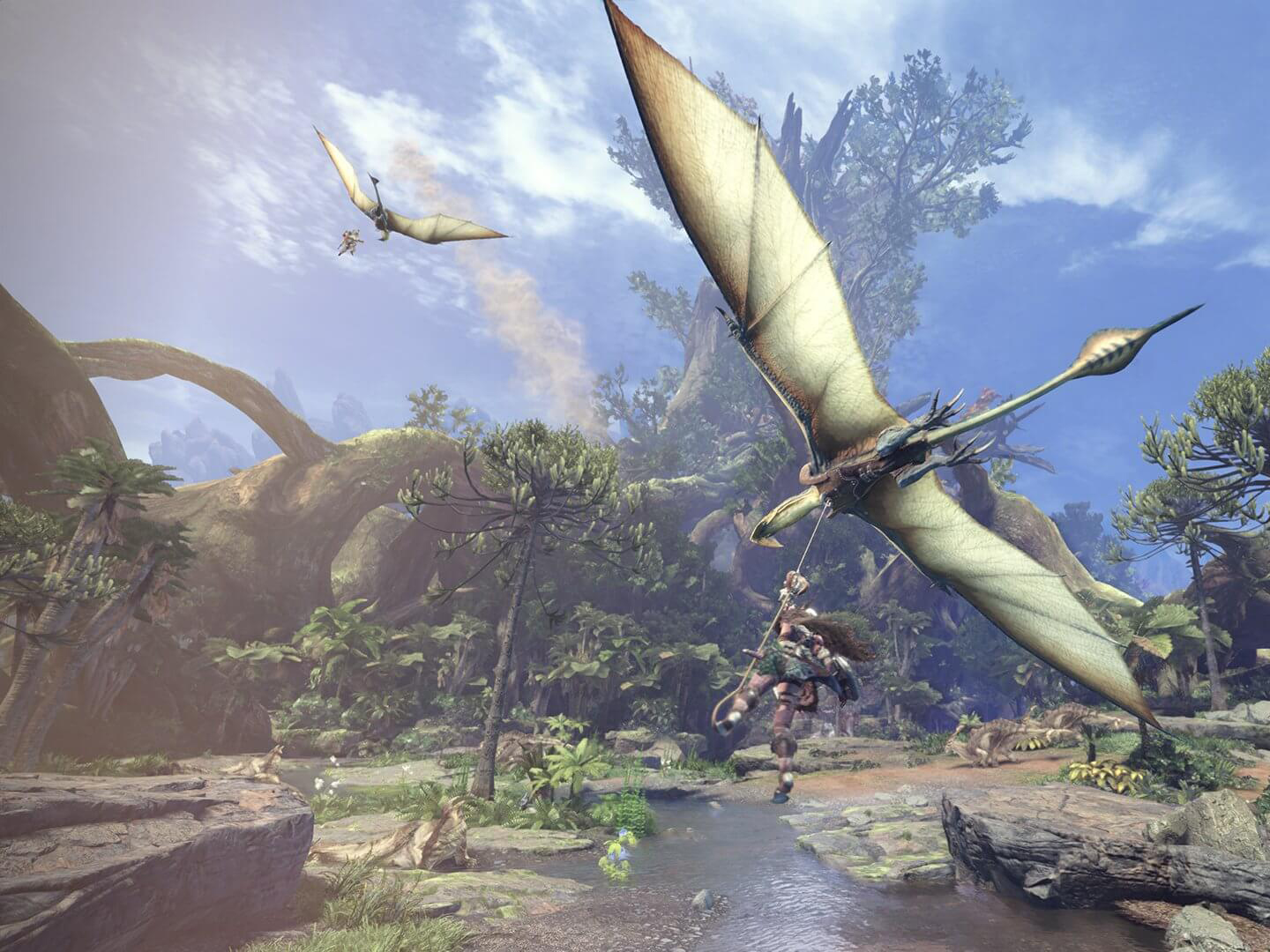Monster Hunter: World review
Happy hunting!
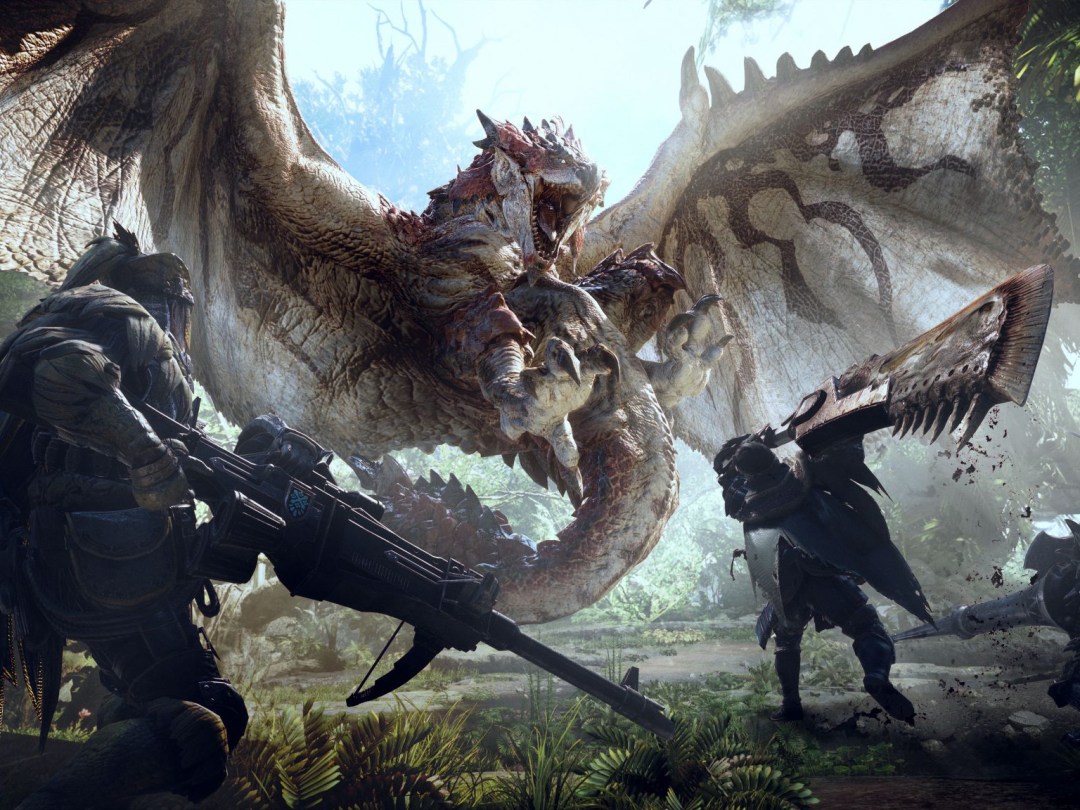
Japan has made some rather outrageous video games in the past, from pigeon dating simulators to a mosquito-centred man hunt. It’s no surprise that these games didn’t translate very well in the UK or America…
The Monster Hunter series’ failure to win Western gamers, on the other hand, is a more curious case. Sure, it features a few trademark Japanese quirks, such as talking cats and 10ft swords – but at its core it’s about something that gamers all over the globe share a love for: slaying monsters.
Capcom’s not giving up hope though. Its latest installment, Monster Hunter: World, has been specifically made to cater for a Western audience. It’s smoothed out the difficulty curve, added a blockbuster story and decided on a global release – just to show it’s not picking favourites.
Question is, are these changes enough to attract Western fans, or is the Monster Hunter series destined to remain a Japanese cult classic? My money’s on the former.
Crafty kills

It’s easy to see why many gamers in the West have been put off by Monster Hunter‘s steep learning curve. Even in World the bombardment of tutorials at the start hits you harder than the paint cans did Home Alone‘s Harry and Marv.
Truth is, though, Monster Hunter actually has a simpler premise than most. Equip a weapon. Kill a monster. Use loot to craft upgraded gear. Repeat. This loop is delightfully addictive. Monsters are varied enough to prevent combat from feeling repetitive, while armour and weapon upgrades make such a difference that I was always excited to craft something new.
Sure, there’s a lot of other features to get to grips with – combat combos, stat-boosting meals and traps to name just a few – but while incredibly useful, they’re also optional. If you want to stick to basics by just cracking monster skulls with an axe, that’s entirely possible, although you’d better have a mean swing.
Capcom could have done a better job easing you into the game – as by god is it overwhelming at first – but equally, having a plethora of combat options right from the start gives you ridiculous scope to fight each monster however you like.
Monster mash
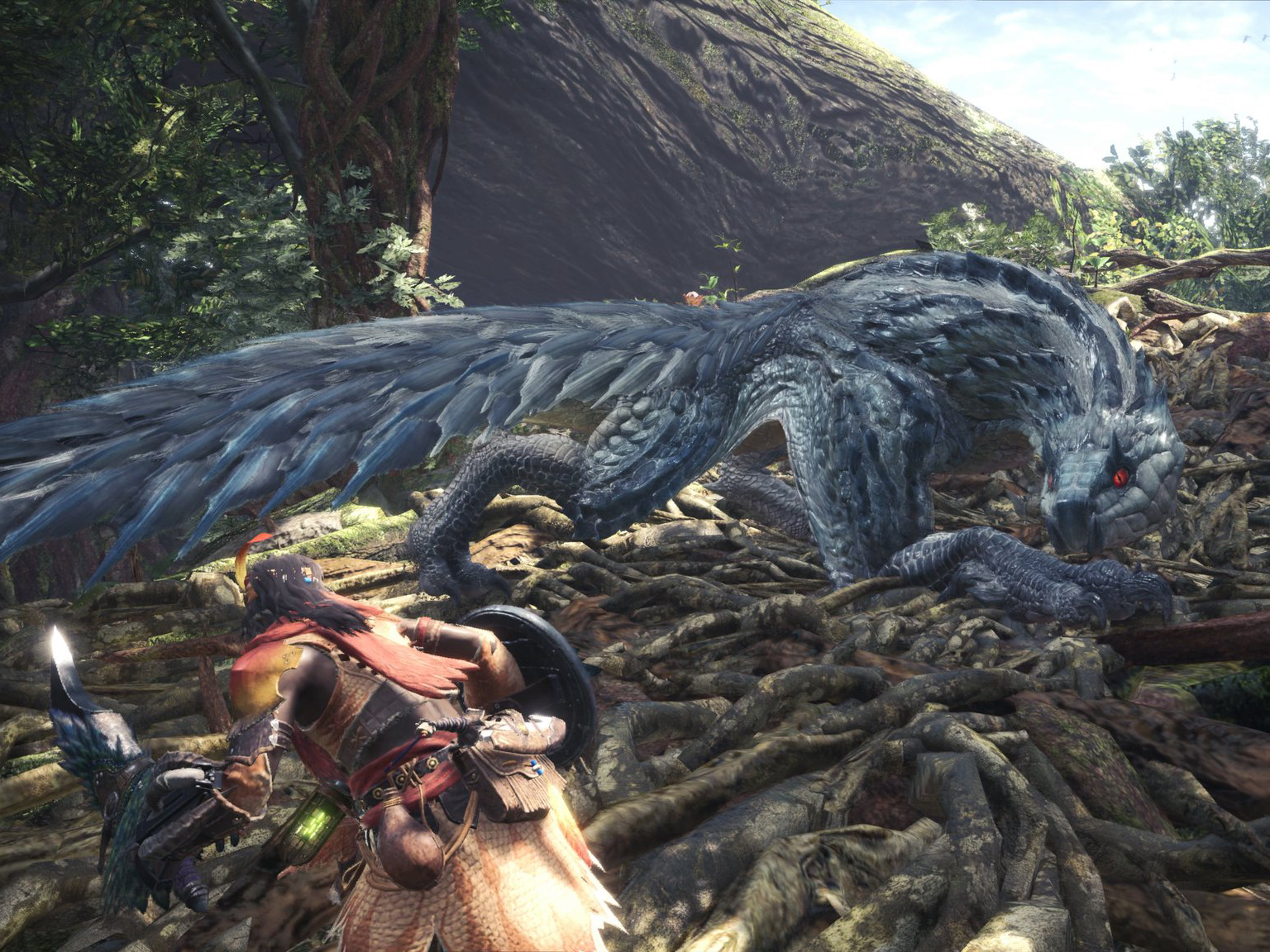
There are 30 giant monsters to do battle with overall, but not one of them fights like your average video game critter. Each one has set attacks, vulnerabilities and health bars that will take last at least 20 minutes to hack down.
While the first few monsters are pretty straightforward to slay, they gradually become more complex. Early highlights include the Tobi-Kadachi, which rubs its tail against tree to create a deadly static charge, and the swamp-residing Jyuratodus, defending itself with mud-layered armour. Both require more tactical astute than just hack and slash, so when you’re successful you feel smart as well as skilled.
Towards the latter stages of the game you must face the likes of the dragon-esque Rathalos, that not only has the advantage of being airborne, but can also attack you with jets of flames and its venomous talons. The pacing of monster difficulty is handled adeptly, as you’re steadily introduced to new elements, status effects and enemy types so you never feel completely out of your depth.
Most impressive of all, though, is how these monsters behave outside of combat. They’ll roam their habitats chowing on prey, drinking from rivers or even brawling with other beasts. Not only is watching this realistic behaviour incredibly immersive, but it can also offer an insight into their weaknesses. The Great Jagras, for example, will inflate its stomach to swallow sizable creatures, leaving it vulnerable to frontal attacks. It pays to be perceptive and patient.
Heavy metal
Unlike most games, Monster Hunter: World gives you a war chest of 14 different weapons right from the start. They’re all ridiculously diverse, too – from the traditional sword and hammer to the bizarre insect-taming rod and musical bagpipes. No, seriously.
Despite the glut of weaponry, I took the familiar option: the sword and shield. It proved to be a successful marriage initially (at least when I turned off the awful targeting system), but then my opponents became more complex. The Radobaan, for example, had tough spiny-shelled armour on its back, which my sword wasn’t very capable of dealing damage to.
For my second attempt, I took advice from my monster handbook and equipped a blunt weapon. With the hammer I could now bash the Radobaan’s armour until it broke, leaving it exposed to high-damage attacks. Sussing this out was ultra satisfying. From then on I was switching to the bow to tackle airborne creatures, opting for a sharp weapon if monsters’ limbs could be sliced off, and equipping my hammer to break skulls, beaks and armour.
It’s not only weapon-types that can take advantage of a monster’s weakness either, as certain beasts are also vulnerable to elemental weapons. After looting the aforementioned Tobi-Kadachi I could craft an electricity-arcing sword, which worked wonders against a particularly annoying ice dragon. Finding the right tools and weapons in preparation for each monster is almost as enjoyable as the actual combat, making you feel like a proper hunter.
Prepare for trouble
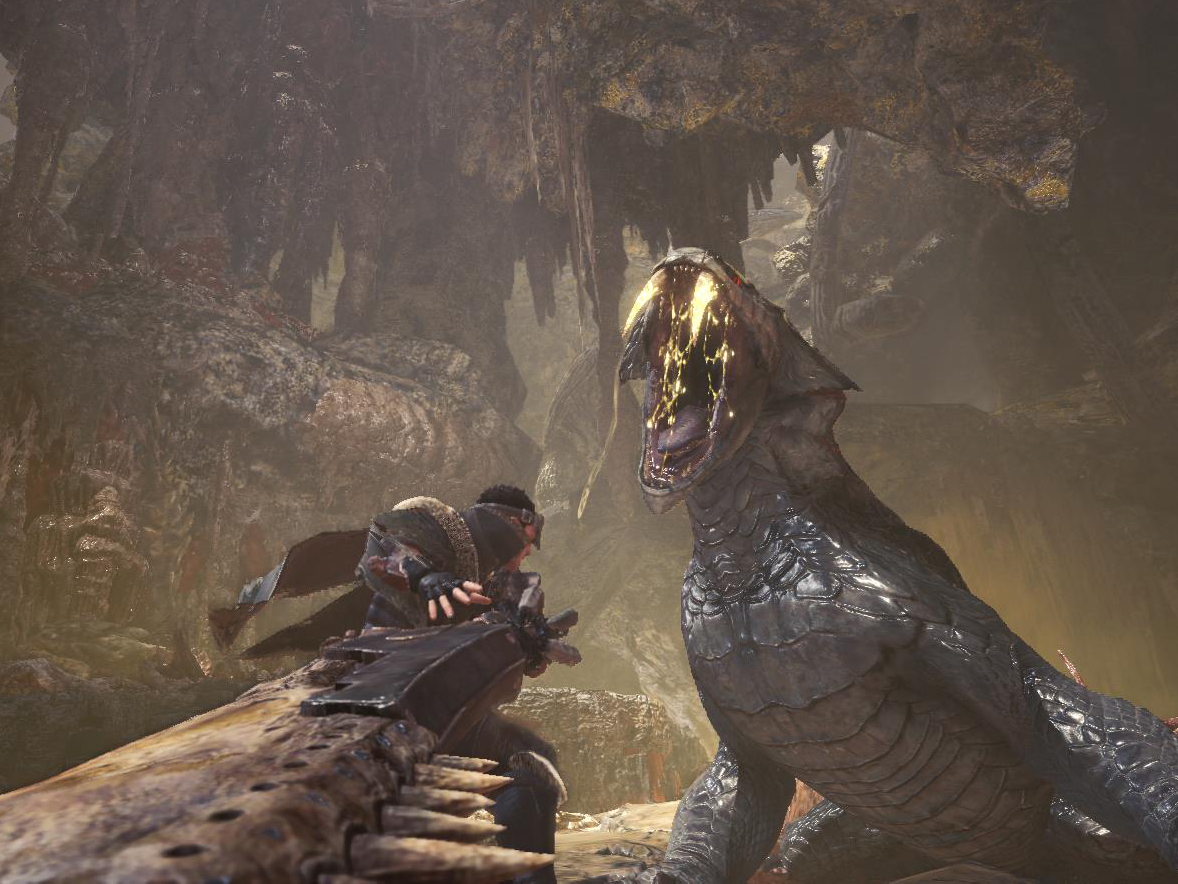
When going on a mission, you’re only allowed to take one weapon and a limited number of items. This means no swapping from a bow to an axe mid-fight, so you’ll really have to think carefully about your inventory.
Will you stock up on health potions? How about some flash bombs to stun your enemy? Although, don’t forget those antidotes if you’re up against a venomous critter. Fortunately, these items can be crafted from components that you find in the wild, so it pays to go foraging in-between battles.
You’ll need to be quick though. You’ve a limited amount of time (generally 50 minutes) to complete each task before being whisked back to your home base. At first, this atypical format feels restrictive compared to the freefrom open words that we’re accustomed to. However, it actually adds a greater sense of urgency to the combat.
Plus, you can always go on an expedition to a chosen hub world. You can’t complete story missions in this mode, but you get unlimited time to loot monsters and explore habitats. It’s worth being inquisitive too. I once kicked a toad that, to my shock, blasted me with a puff of sleeping gas in return… Yes it was initially embarassing, but using the amphibians against monsters in later hunts proved incredibly useful.
Whole new worlds
From the glittery rock-covered Coral Highlands to the fleshy and horrific Rotten Vale, all of the small open-world hubs that the monster encounters take place offer their own fantastical flavour. They look absolutely stunning too.
The attention to detail is remarkable, with monster footprints visible in the mud and claw marks carved into tree trunks. There’s enough here to locate your targets on these tellsigns alone.
However, Capcom decided to implement a new feature called Scout Flies. Similar to The Witcher‘s hunting senses, a thick stream of green flies lead the way to your next destination and highlight points of interest like herbs and monster tracks.
Personally, I’m not a fan. They take away the excitement of a hunt and Monster Hunter fans will likely accuse Capcom of introducing the feature to lower the difficulty for newcomers.
Lose the plot
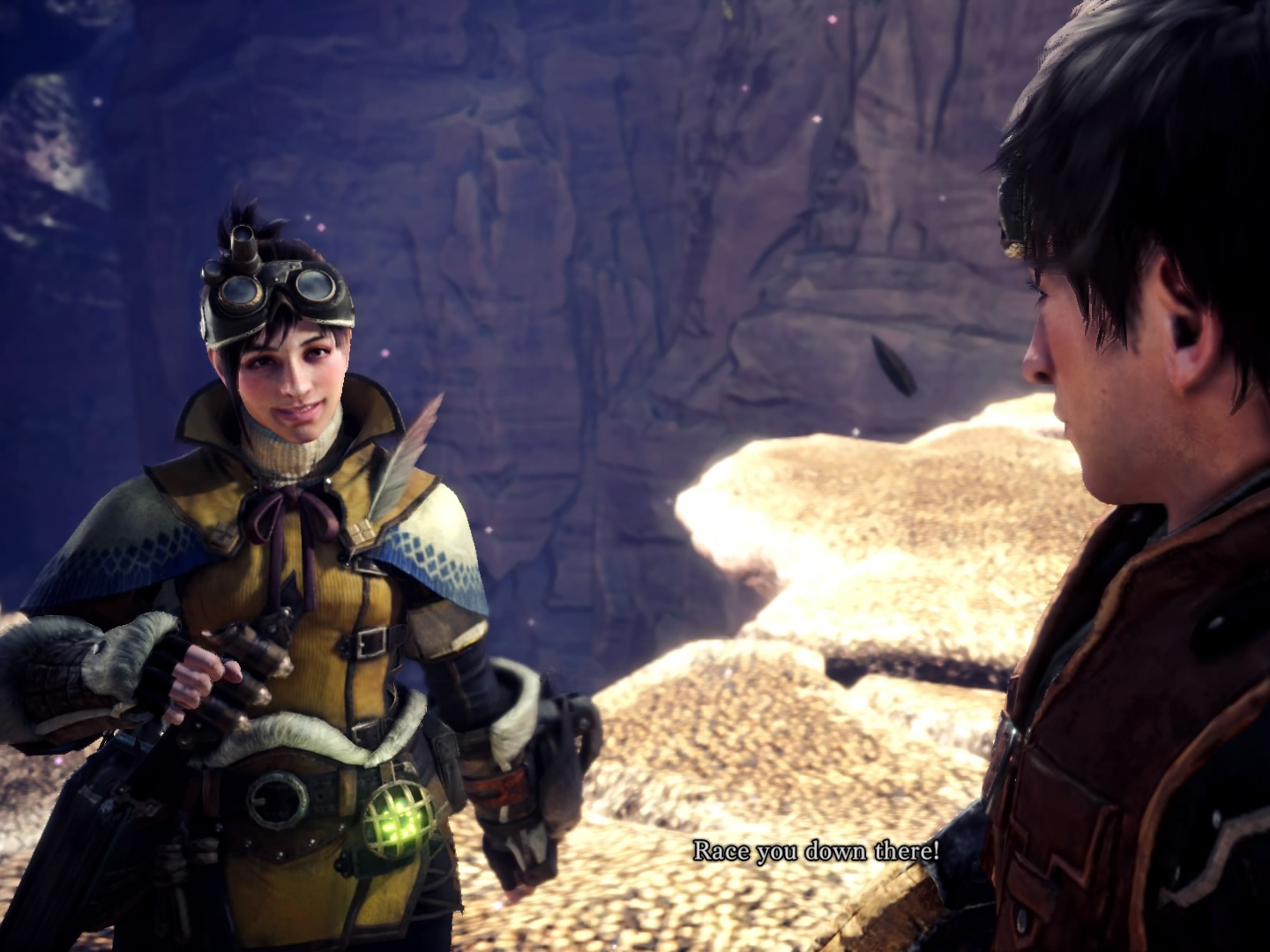
One of Capcom’s biggest plans to lure Western folk into its Monster Hunter honeycomb was to incorporate a blockbuster story. However, it doesn’t really pay off.
The plot revolves around your attempts to capture the Elder Dragon Zorah Magdaros, but there isn’t really any major incentive, so it’s hard to get invested.
Dialogue is a little too high on the cheese spectrum too, plus the lip-syncing is terrible. Characters look like amatuer ventriloquist dolls. It honestly seems as if Capcom has just added in an English dub without bothering to alter the animation.
But judging Monster Hunter: World too harshly on its story would be like caning Mario Odyssey for having an outdated hero-saves-princess plot. The story is essentially just there to add some respite between fights and to give you an ultimate end goal.
Hunt in packs
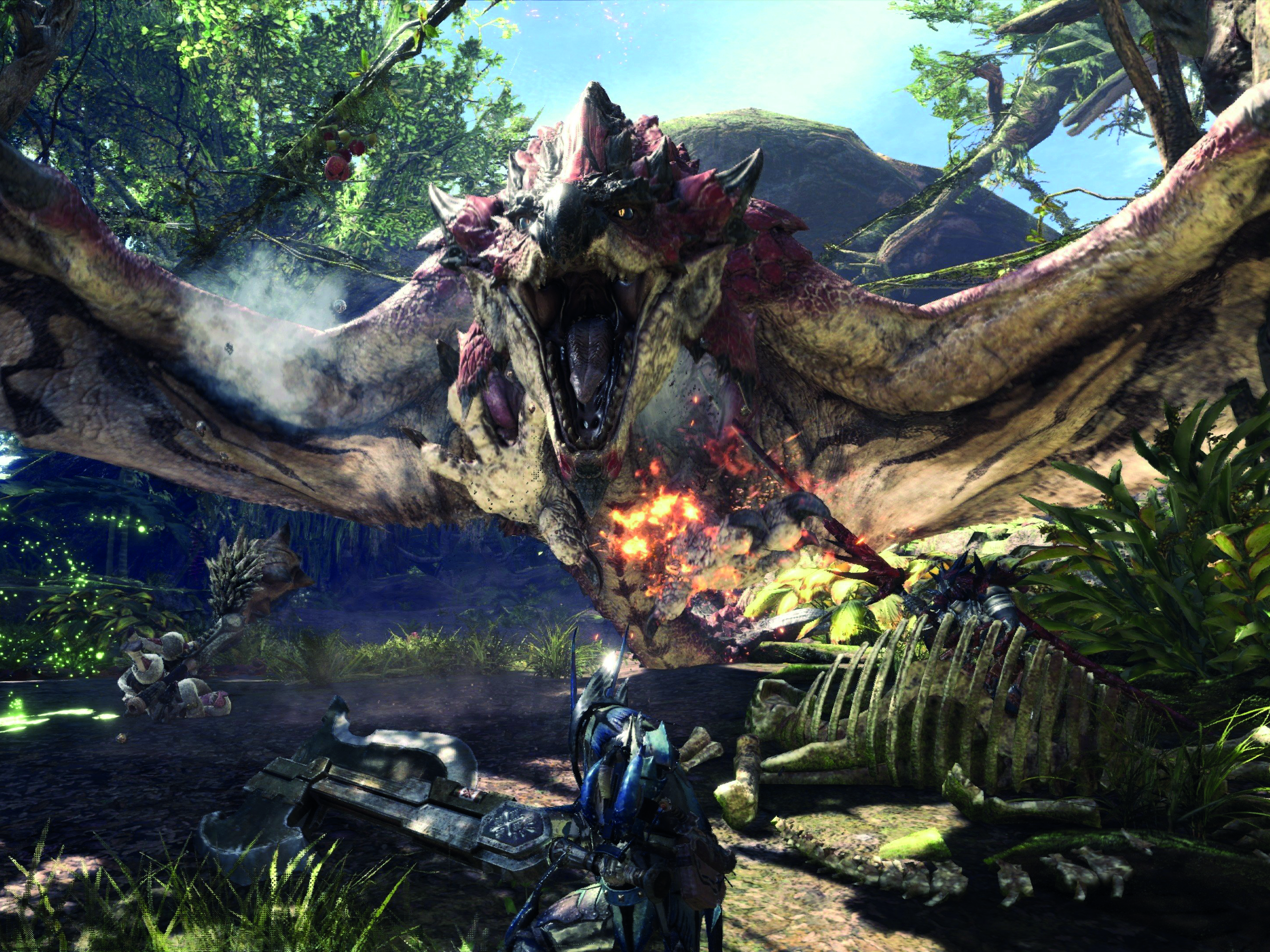
One of the Monster Hunter series’ greatest strengths is giving players the ability to take a team of friends to face off against beasts online. World offers this too, while also letting you send for help mid-battle for player drop-ins, just in case that T-Rex wannabe Anjanath is using you as a chew toy.
Not only can you engage in the main campaign with friends, but you can also go on side quests, compete in monster-slayin’ time trials and even arm-wrestle in the social hub.
However, I’ve had issues connecting to the server and matchmaking with other players despite already downloading the day one patch. I’ve reached out to Capcom to establish whether this is a widespread problem, but have not yet received a response. Hopefully Capcom are on top of this, and the servers should run fine on release, but this is something to be wary of if you’re buying World solely for online multiplayer.
Monster Hunter: World verdict
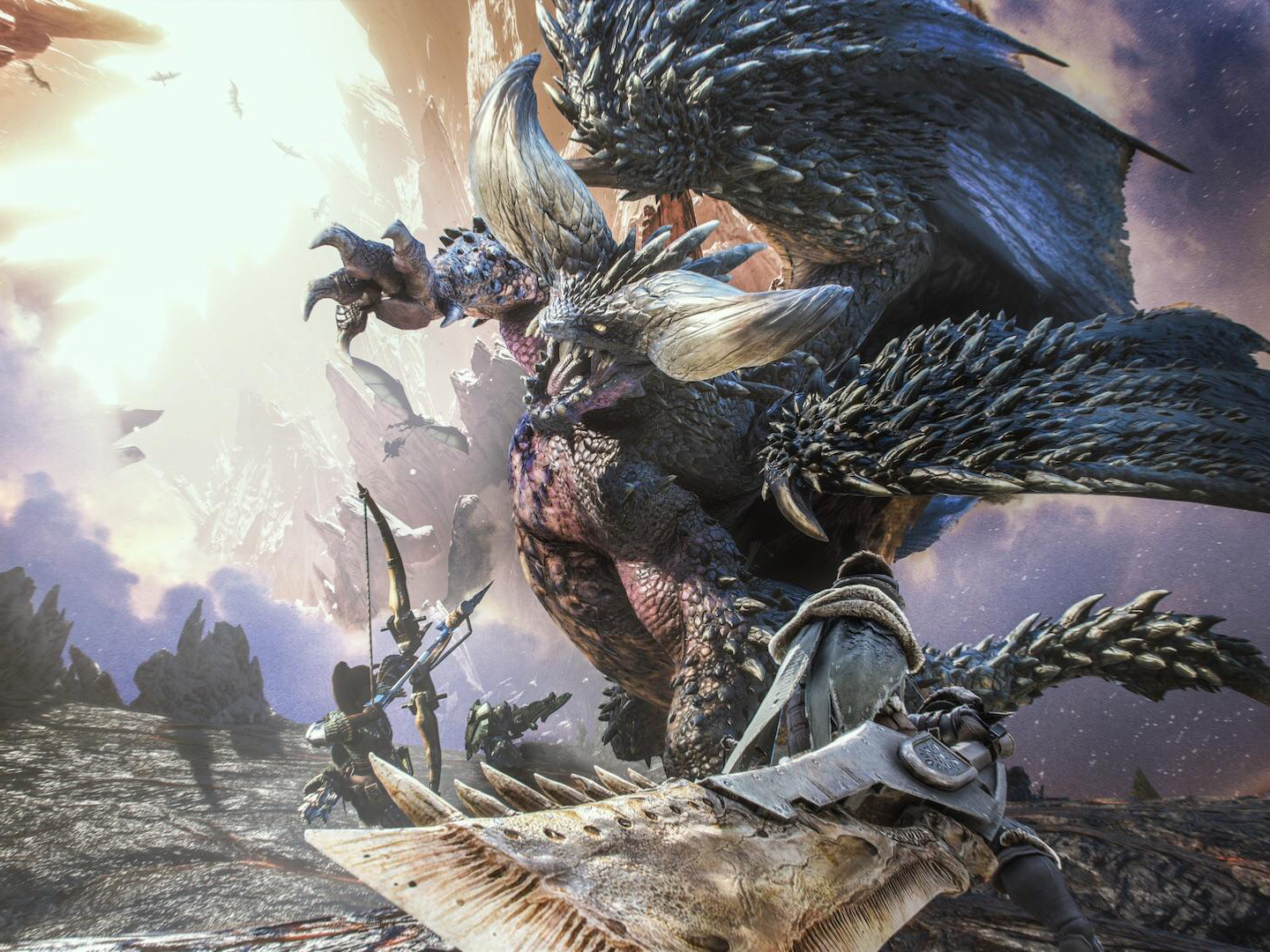
Monster Hunter World is bigger and better than its predecessors in almost every way. The series has enjoyed a huge graphical boost thanks to the leap to PS4 and Xbox One, while the combat is as fun and engrossing as ever. Small refinements have also improved mission structures, weapons/armour upgrades and monster behaviour.
Importantly though, Capcom has ensured that it’s approachable for newcomers. The tutorials may be daunting at first, but push past that and World offers a lenient learning curve.
It’s not without its flaws, but once Monster Hunter: World gets its claws into you, it’s hard to break free. If this series is ever going to win over Western players, then this will be the game to do it.
Stuff Says…
Perfectly weighted for veteran hunters and newcomers alike, World is one monster of a game
Good Stuff
Challenging combat and plenty of weapons
Creative monster designs
Online co-op mode
Bad Stuff
Barebones story
Terrible lip-syncing
Server issues
